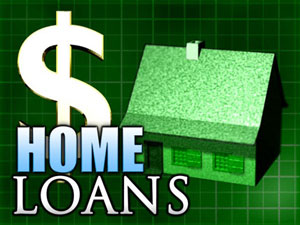Will higher down payment requirements decrease Black home buying opportunities?
By Nisa Islam Muhammad -Staff Writer- | Last updated: Feb 3, 2012 - 12:43:37 PMWhat's your opinion on this article?

According to new research the government’s plan to require 10-20 percent mandatory down payment would exclude about 75 percent of Blacks and about 70 percent of Latino borrowers who otherwise would have been successful homeowners with a fairly priced mortgage. |
Only 302,000 new homes were sold in 2011, which is the lowest number of annual sales since the government began tracking in 1963, according to the Census Bureau and the Department of Housing and Urban Development.
“The bottom line is that, while 2011 was the worst year for new-home sales on record, signs of gradual improvement began to emerge near the end of the year across a growing number of markets,” said Bob Nielsen, chairman of the National Association of Home Builders, and a homebuilder from Reno, Nev.
“This nascent recovery should continue to gain strength in the year ahead as more buyers take advantage of the very good deals that are out there for newly built homes.”
Is the end in sight for the housing crisis?
NAHB Chief Economist David Crowe seems to agree that the market is holding its own. “However, many of the same challenges that builders have cited in the past continue to pose obstacles to the market’s advancement, including buyers’ inability to sell an existing home, consumer concerns about job security, and tight credit conditions for both building and buying new homes.”
Many in the housing industry continue to look to the government for relief that often doesn’t come. Federal officials seemed to recognize that. HUD Assistant Secretary Raphael Bostic recently said “with so many homeowners still struggling to pay their mortgages or move into more sustainable loans, we cannot rest on our laurels. There is still a lot of work to do.
“That’s why the Obama administration continues to push hard for effective implementation of our recovery programs to help more underwater borrowers and unemployed or underemployed homeowners stay in their homes whenever possible.”
While the government struggles to find a solution to the housing crisis, could requiring higher down payments like 10 percent help prevent defaults?
Only if the problem is how to further keep Blacks and Latinos from buying a home.
According to new research the government’s plan to require 10-20 percent mandatory down payment would exclude about 75 percent of Blacks and about 70 percent of Latino borrowers who otherwise would have been successful homeowners with a fairly priced mortgage.
Requiring the higher down payment is based on research that homeowners who put down higher amounts of money were less likely to default on their loans.
The working paper, “Balancing Risk and Access: Underwriting Standards for Qualified Residential Mortgages,” was produced by the UNC Center for Community Capital and the Center for Responsible Lending.
Researchers looked at mortgages originated from 2000 to 2008 and what would have happened if a 20 percent down payment and other underwriting criteria had been imposed beyond those already mandated by the 2010 Dodd-Frank Wall Street financial reform law.
The study finds the Dodd-Frank ban on loans with the highest risk of default—for example, those with prepayment penalties or no income documentation—fixes the bad underwriting that caused the housing crisis.
Adding a down payment threshold set by the federal government would do little to reduce defaults relative to the large number of creditworthy homebuyers it would push from the market. These findings are particularly significant given that a stalled housing market is a key obstacle to economic recovery.
“Put how much down?” asked Richard Hamilton, a prospective homebuyer in D.C. “Ten to twenty percent? They must not want working people to buy a house. That’s crazy. I can pay my bills and afford a mortgage, but how am I supposed to save that kind of money to buy a house? This government is going crazy. Tell those government people I’m not part of the One Percent.
“I’m part of the 99 Percent trying to make the American Dream come true, won’t happen if I have to have that kind of money. First they give us bad loans and take our homes, now they make it nearly impossible to buy a home. What’s next?” he asked.
The Qualified Residential Mortgage, as the proposal is called, will define who will and who will not get the most affordable mortgage products. It potentially prohibits a significant segment of qualified borrowers from being able to achieve homeownership, according to the Mortgage Bankers of America.
“Few loans to ordinary customers are likely to be made outside the QRM construct; the loans that are made will be costlier and likely to be made only to more affluent customers,” Mortgage Bankers of America explained.
INSIDE STORIES AND REVIEWS
-
-
About Harriett ... and the Negro Hollywood Road Show
By Rabiah Muhammad, Guest Columnist » Full Story -
Skepticism greets Jay-Z, NFL talk of inspiring change
By Bryan 18X Crawford and Richard B. Muhammad The Final Call Newspaper @TheFinalCall » Full Story -
The painful problem of Black girls and suicide
By Charlene Muhammad -National Correspondent- » Full Story -
Exploitation of Innocence - Report: Perceptions, policies hurting Black girls
By Charlene Muhammad -National Correspondent- » Full Story -
Big Ballin: Big ideas fuel a father’s Big Baller Brand and brash business sense
By Bryan Crawford -Contributing Writer- » Full Story






 Click Here Stay Connected!
Click Here Stay Connected!








